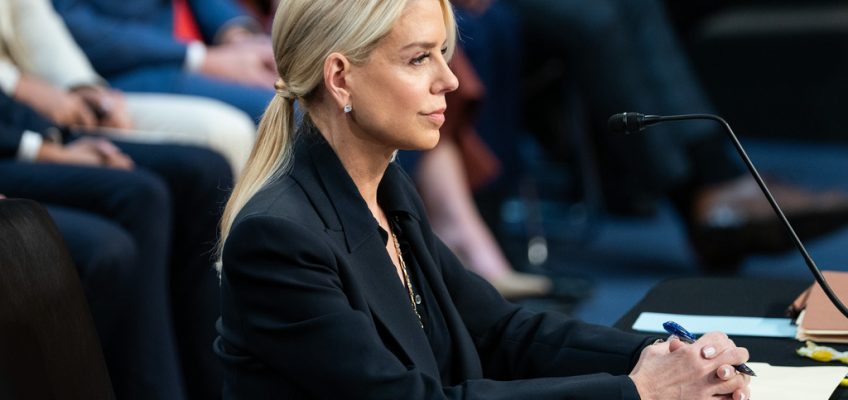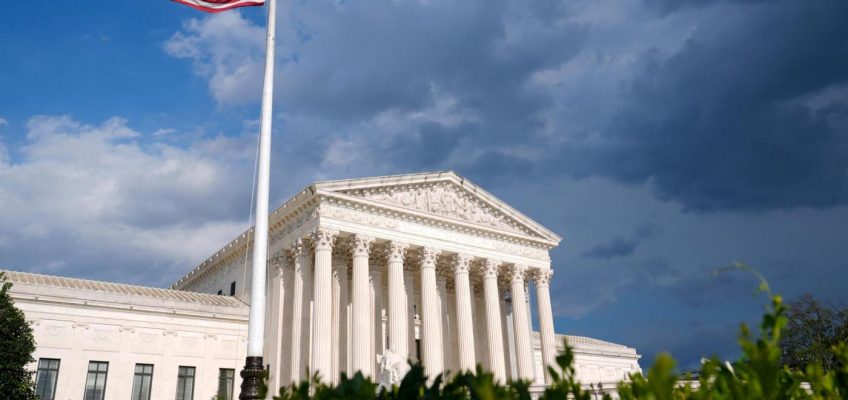By ALANNA DURKIN RICHER, ERIC TUCKER and STEPHEN GROVES, Associated Press
WASHINGTON (AP) — Attorney General Pam Bondi defended herself against Democratic criticism that she had weaponized the Justice Department at a Tuesday congressional hearing where she was set to face tough questions over the political pressure on the law enforcement agency to pursue President Donald Trump’s perceived foes.
During her opening remarks, Bondi echoed conservative claims that President Joe Biden’s Justice Department, which brought two criminal cases against Trump, was the one that weaponized the law enforcement agency even though some of its most high-profile probes concerned the Democratic president and his son. Bondi pointed to revelations from a day earlier that the FBI had analyzed phone records of several Republican lawmakers as part of an investigation into Trump’s efforts to undo the results of his election loss to Biden in 2020.
“They were playing politics with law enforcement powers and will go down as a historic betrayal of public trust,” Bondi said. “This is the kind of conduct that shatters the American people’s faith in our law enforcement system. We will work to earn that back every single day.”
The testimony before the Senate Judiciary Committee comes just ahead of former FBI Director James Comey’s first court appearance following an indictment that has deepened concerns that the department is being used to seek vengeance against the Republican president’s political opponents. It also comes as federal law enforcement officials surge into several cities across the U.S. to combat crime and enforce immigration laws.
Related Articles
At the center of shutdown fight, health care is one of the most intractable issues in Congress
Canadian PM Carney visits Trump as relations between the longtime allies sit at a low point
Trump approves Alaska mining road to boost copper, zinc production
Transportation Secretary says government shutdown adds stress on air traffic controllers
Maine is investigating a claim that bundles of ballots ended up in a resident’s Amazon order
The hearing is likely to split along deeply partisan lines, with Republicans expected to laud the Justice Department’s focus on confronting violent crime and reversing Biden-era priorities. Democrats, by contrast, are poised to grill Bondi about a turbulent eight-month tenure that, besides politically charged investigations, has also been defined by mass firings and resignations of experienced prosecutors, including some who investigated Trump, resisted Trump administration pressure or simply served in senior roles in the prior administration.
As the hearing opened, Sen. Chuck Grassley of Iowa, the committee’s Republican chairman, praised Bondi for “getting tough on criminals” and her efforts to scrutinize what conservatives have alleged was the targeting of conservatives by the Biden Justice Department.
Sen. Dick Durbin of Illinois, the committee’s top Democrat, lamented the surge of hundreds of career officials with a combined thousands of years of law enforcement experience. Durbin told Bondi that her actions at the Justice Department, including the diversion of agents to focus on immigration enforcement, are making America less safe.
“What has taken place since January 20th, 2025, would make even President Nixon recoil,” Durbin said of the president who resigned to avoid being impeached in connection with the Watergate scandal. “This is your legacy, Attorney General Bondi. In eight short months, you fundamentally transformed the Justice Department and left an enormous stain in American history. It will take decades to recover.”
Bondi’s appearance is her first before the panel since her confirmation hearing last January, when she pledged to not play politics with the Justice Department — a promise Democrats are likely to pounce on as they press the attorney general on whether she can withstand pressure from a president publicly calling to charge his perceived enemies.
Bondi and other Republican allies have said the Biden administration, which brought two criminal cases against Trump, was the one that weaponized the department even though some of its most high-profile probes concerned the Democratic president and his son.
The Comey indictment is likely to take center stage at the hearing. The U.S. attorney’s office in Virginia that brought the case had expressed reservations about the strength of evidence, and the Trump administration had to race to install a new prosecutor to secure the charges after the experienced leader of that office resigned days earlier under pressure.
Other inquiries are likely to come up as well.
The Justice Department under Bondi has opened criminal investigations into other vocal critics of the president, including Democratic U.S. Sen. Adam Schiff, who sits on the Judiciary Committee, as well as New York Attorney General Letitia James and Andrew Cuomo, the former New York governor and current mayoral candidate. They have all denied wrongdoing, as has Comey, and have slammed the investigations as politically motivated.
Bondi is likely to tout the Justice Department’s efforts to tackle violent crime by surging federal law enforcement in Washington and now Memphis, Tennessee. Republican lawmakers who make up the majority of the committee will also likely highlight the department’s focus on illegal immigration and dismantling Mexican cartels responsible for smuggling drugs into American communities.
The attorney general may also face questions about the Justice Department’s handling of investigative files related to the Jeffrey Epstein sex trafficking investigation. The wealthy New York financier’s case has dogged the department since its decision in July not to publicly release any more files in its possession after raising the expectations of conservative influencers and conspiracy theorists.
But even in the face of intense conservative outrage, Bondi maintained the strong public support of the president.




